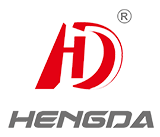How should the machine tool industry face the trade war?
Release time:
2020-10-23 11:34
Source:
How should the machine tool industry face the trade war?
The trade war officially began on July 6, when the United States imposed 25 percent tariffs on $34 billion of Chinese products. China has made it clear that it will never fire the first shot, but in order to defend the core interests of the country and the interests of the people, it is forced to make necessary counterattacks. Over the past few months, the machine tool industry has been watching the progress of the Sino-US trade war, because the trade war will have a corresponding impact on the machine tool industry.
First, the China-Us trade war
The Sino-US trade dispute, also known as the Sino-US trade war and Sino-US trade friction, is an important issue in Sino-US economic relations. Trade disputes mainly occur in two aspects: first, China has a comparative advantage in the export field; Second, China does not have an advantage in import and technical knowledge areas. The former is essentially competitive, while the latter is one in which markets do not fully function, and their impact on the economic welfare and long-term development of the two countries is different. The focus now is on the first aspect.
On June 15, 2018, the US government issued a list of goods subject to additional tariffs, imposing 25% tariffs on about $50 billion of goods imported from China, of which about $34 billion of goods have been implemented since July 6, 2018, while about $16 billion of goods have been subject to additional tariffs for public comment.
In the list of additional tariffs, machine tool products are almost all covered. That is to say, as long as the machine tool exported to the United States, no matter what kind of machine tool, no matter what grade, on the basis of the original 5% tariff, 25% tariff will be added to become 30%. In addition, the tool class, functional parts, accessories, abrasives, etc., are also all levied 25% tariff.
Many products in the field of machine tool users are also included in it, such as: engine class, mainly engines for large equipment (including steam turbines, internal combustion engines, water turbines, turbofans, turboprop engines, electric motors, liquid pumps, compressors, etc.); Construction machinery, including cranes, mobile lifting frames, forklifts, bulldozers, pile drivers, etc. Transportation means, including tractors, cars, subways, motorcycles, helicopters, planes, rockets, ships, etc., are basically listed.
Overall, the list is still aimed at China's 2025 strategic industries, specifically aerospace equipment, high-speed rail equipment, a new generation of information technology, agricultural machinery equipment, CNC machine tools and industrial robots, biomedicine and medical equipment, new energy and new materials, ships and offshore equipment. Although this trade war, the intention of the United States is not only in the field of trade, but the direct impact on our machine tool industry enterprises is to increase the 25% tariff.
Second, the impact on the industry and enterprise response measures
China Machine Tool Industry Association, as the national industry organization of China's machine tool industry, is very concerned about the development trend of the Sino-US trade war and what impact member enterprises will be affected in the future. In 2017, the total export amount of machine tool products in mainland China is 3.2 billion US dollars, and the export amount to the United States is 1.86 billion US dollars, of which, metal processing machine tools are 350 million US dollars, and tools are about 550 million US dollars. From the point of view of the amount of exports by each company, because the export volume is not large, it seems that the impact of increasing tariffs is not big. However, from the long-term perspective of enterprises to explore the international market, the impact is still relatively large. To this end, we surveyed companies in a number of industries that export business to the United States, including metal working machine tools (gold cutting and forming), tools and tools, accessories, abrasives companies, and summarized their situation below.
The war of the trade war, the export of enterprises to the United States will certainly be affected accordingly, and enterprises with small exports can switch to other trade channels to reduce losses. However, for enterprises with a large share of exports, especially export-oriented enterprises, especially some enterprises have exported to the United States for more than 20 years, the losses they will suffer can be imagined.
But the good news is that these companies are not waiting on the sidelines, but actively working with American customers to do everything possible to reduce the impact. Since entering March, they have been in close communication with U.S. importers and distributors to discuss how to absorb the cost increases caused by the tariff increase.
For those products that lack characteristics in export products, are easily replaced by others or are not competitive, the increase in tariffs will inevitably lead to a decrease in the market share of the United States.
For those companies that specifically customize products for American customers, the market has been stable, and the customers have signed long-term contracts, and the 25% tariff increase will have a big impact on them. In order to reduce the loss to a minimum, some are ready to adopt a tripartite strategy with importers and distributors, and some companies are ready to absorb the market share of the United States to other markets, open up new export channels, and so on.
The tool industry exports to the United States tariff collection situation is divided into two, one is the finished tool, there is no increase in tariffs; The second is the cutting tool raw materials, the future will increase by 25% on the basis of the original tariff.
In short, everyone is planning ahead and actively thinking of ways. Of course, it is also particularly hoped that the government and the association will do a good job in communicating with countries outside the United States on import and export cooperation, and do a good job in consulting and services for the export of machine tool industry to other countries.
Third, take a long-term view and improve yourself
How long the Sino-US trade war will last and what variables there will be are unknown, and we should pay close attention to the trend of the trade war in order to adjust our response strategies. A few hours after the official start of the trade war, the US Trade Representative Office announced at 3 am on the 7th Beijing time that those US companies that will be affected by the trade war to import products from China can apply to the US government within 90 days for a one-year "tariff exemption". No matter how the policy of the U.S. government changes, we should make long-term plans, innovate and improve products, reduce costs, open up new ways to expand exports, increase the development of domestic and international markets, and make great efforts to fundamentally improve product competitiveness, so as to respond to changes in order to achieve the healthy development of industry enterprises.
Next page
Related news
Host, he is the subject of CNC machine tools, including machine tool body, column, spindle, feed mechanism and other mechanical parts. It is a mechanical component used to complete various cutting processes. Numerical control device is the core of numerical control machine tool, including hardware (printed circuit board, CRT display, key box, paper tape reader, etc.) and the corresponding software, used to input the digital part program, and complete the input information storage, data transformation, interpolation operations and the realization of various control functions.
The difference between precision sheet metal processing and ordinary sheet metal processing
From the point of view of the development process, precision sheet metal is actually an advanced version of sheet metal processing, the process changes little, the biggest difference is that precision sheet metal processing precision tolerance range is reduced to below 0.2 mm, while the accuracy of ordinary sheet metal processing is generally between 0.2 and 1 mm.
What are the heat treatment methods of CNC machining
Heat treatment process generally includes heating, insulation, cooling three processes, sometimes only heating and cooling two processes. These processes are interconnected and uninterruptible. Metal heat treatment process can be roughly divided into integral heat treatment, surface heat treatment and chemical heat treatment three categories.
What are the common surface treatments?
The appearance of the workpiece is inseparable from the design, color, material and process, of which the surface treatment process is the most direct reflection of the appearance of the product. Surface treatment can improve the appearance, texture, function and other aspects of product performance.


